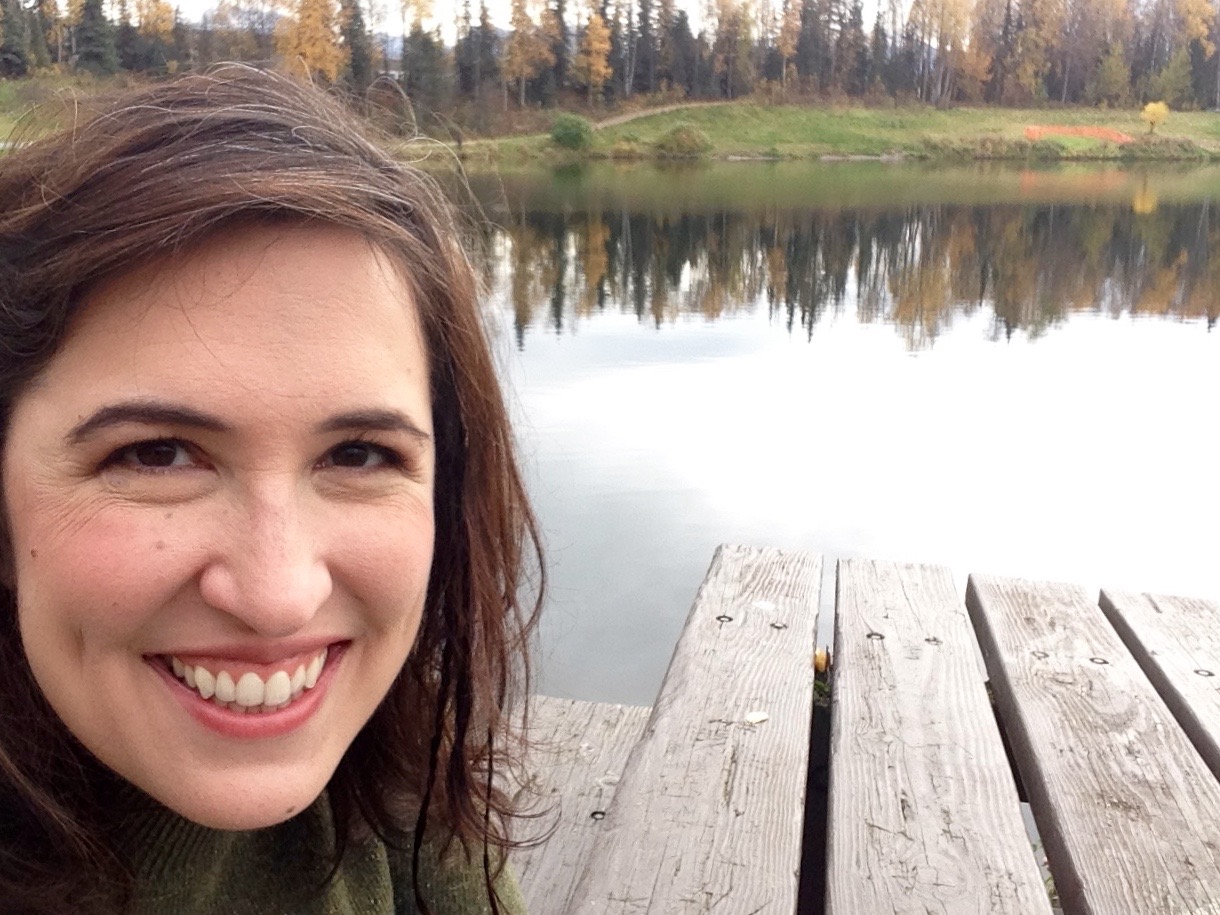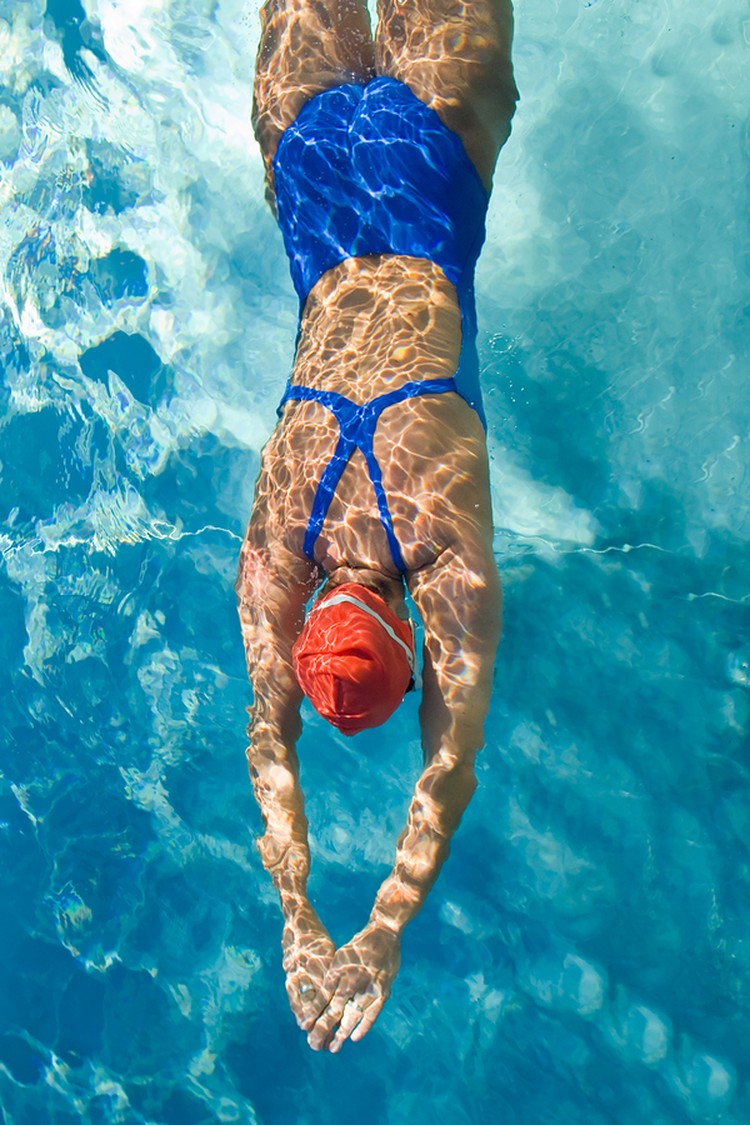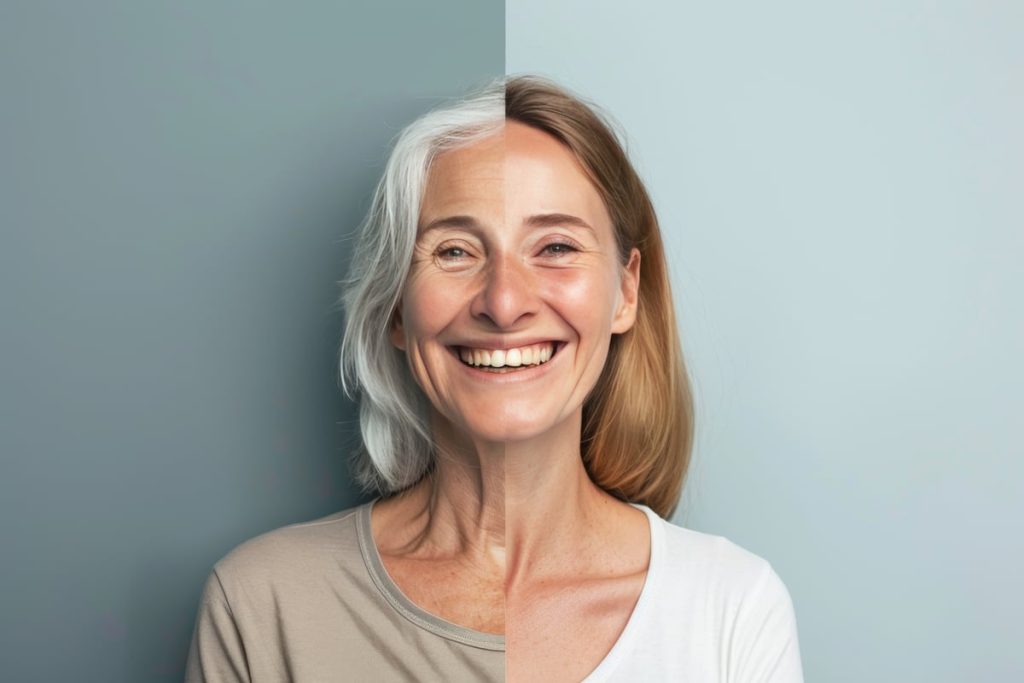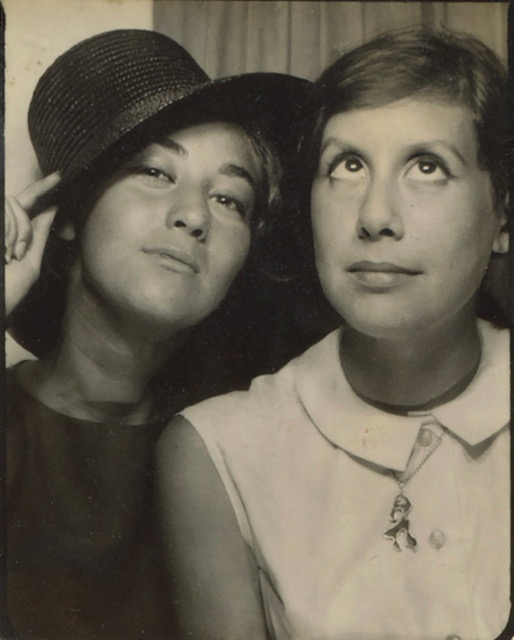Harrison Caldwell had a good excuse for not being athletic: one of his legs was about a quarter inch shorter than the other, thanks to a childhood bout with polio. Plus, his feet were so flat that the Army turned him down at the height of the Vietnam War.
He had a good excuse for smoking too. He came of age in the ‘60s, when about half of American men were smokers.
But at about age 40—with a 1-year-old daughter who would soon be watching her dad’s example something clicked.
“I had gone from around 150 [pounds] to around 160, 165,” says Caldwell, who lives in Pontotoc, MS. “Nothing bad other than the suit size changed a little bit, but you could see the writing on the wall.”
Caldwell had a choice. He could keep up unhealthy habits and therefore accept aging as a steep downward slope. Or he could kick some changes into gear.
His decision would end up impacting him for decades, changing his mind on what was possible and helping reshape his life and the way he lived it.
The Real Fountain of Youth?
In general, by around their mid-40s to early 50s, even active people start to lose muscle and bone if they don’t do something to counteract it, says Miriam E. Nelson, PhD, director of the John Hancock Research Center on Physical Activity, Nutrition, and Obesity Prevention at Tufts University in Medford, MA. Other measures of health, like blood pressure and cardiovascular fitness, start to go downhill too. And increasing age brings a heightened risk for certain cancers and chronic diseases.
But there is something that can help you avoid or slow down all this deterioration—even reverse some of it. Some have compared this natural remedy to the fountain of youth.
It’s plain old exercise.
Only 21 percent of American adults get the recommended amount of aerobic and strength-training exercise, according to the Centers for Disease Control and Prevention.
How Much Is Enough?
The US Department of Health and Human Services lays out its exercise recommendations in the 2008 Physical Activity Guidelines for Americans. According to the report, adults without a condition precluding this much exercise should get a minimum of:
- Two-and-a-half hours a week of moderate-intensity activity (such as brisk walking), OR
- An hour and 15 minutes of vigorous aerobic activity, OR
- An equivalent combination.
Perform the exercise in at least 10-minute sessions each, spread throughout the week. Two days a week, also do strength training involving all major muscle groups.
For more health benefits, increase aerobic exercise to five hours of moderate-intensity or two-and-a-half hours of vigorous-intensity activity a week.
Start gradually to avoid injury. For more guidelines, including advice on when to consult a doctor before or after beginning exercise, see the report here.
David Nieman, DrPH, a professor in the Department of Health, Leisure, and Exercise Science at Appalachian State University in North Carolina, recommends moving throughout the day, in addition to exercising.
“Prolonged sitting has been related to chronic disease now in a growing number of studies,” he says.
“Exercise is like medicine. You can’t get the immune system going without exercise. You can’t get your blood vessels more pliant without exercise. Your bones can’t be thicker without the weight lifting,” he says. “You’ve just got to keep doing it all your life.”
“Americans are so sedentary that the ramifications of the aging process are starting earlier and earlier,” says Nelson. If you’re approaching your 40s or 50s and haven’t been active, “you better start now.”
Exercise’s Effect on Disease
Most people 65 and older have at least one chronic condition. But exercise can knock out a lot of risk factors for many of those diseases.
Heart disease? Exercise can improve your cholesterol, blood pressure, blood-vessel health and heart health.
Type 2 diabetes? Being active improves your blood sugar and insulin usage.
Alzheimer’s disease? Exercise may help you prevent it or at least slow down its progression.
Certain cancers, such as breast, lung and colon? Not only can exercise help prevent them, but it can help you survive them.
“Whether it’s heart disease, diabetes, cancer, those that are active—once they are healthy enough to become active again—have much better outcomes and survivorship,” Nelson says.
Exercise may also help prevent colds and the flu, in part by revving up the immune system. (Though intense exercise, such as running a marathon, can have the opposite effect.)
And being fit can lengthen your lifespan—by about three years on average, says David Nieman, DrPH, a professor in the Department of Health, Leisure, and Exercise Science at Appalachian State University in North Carolina.
For example, in a 2009 study published in the British medical journal BMJ, Swedish researchers administered questionnaires to 2,205 50-year-old men, then repeated this periodically for 32 years. They found that when inactive or somewhat active men became highly active in their 50s, they were half as likely to die after more than 10 years as they would have been otherwise. This put them on par with men who had already been highly active at 50. According to this study, you may need to keep up this high fitness level for five to 10 years before your mortality risk decreases. The researchers defined “highly active” as doing heavy gardening or recreational sports for at least three hours a week, or regularly engaging in hard physical training or competitive sports.
Certainly genes also have an effect on longevity and your likelihood of getting some diseases.
“But for the most part, exercise—even with a poor genetic makeup—does really optimize your health,” Nelson says.
Exercise’s Effect on Mobility
When Sid Heller of Boulder, CO, turned 100, he said his three keys to a good, long life were music, love and walking.
Heller has always been active. In his 20s, on his way to work, he’d get off the bus a few stops early and walk. Later, while raising a family, he worked out at the gym, bicycled, hiked and swam.
Heller kept swimming into his 90s, stopping only because getting to the pool became difficult. These days, at 104 years old, he attends seated fitness classes at his independent living community. And every morning after breakfast, he takes his walker for a stroll outside.
“I do it because I just feel like doing it,” says Heller, who hasn’t visited a doctor in over a year. “I think it’s necessary for feeling good.” According to the experts, he’s right—in more ways than one.
It’s inactivity, not just aging, that causes many of the changes in muscles and bones that people tend to see as they get older, according to the American Academy of Orthopaedic Surgeons. Exercise can reduce your risk for falls and injury and keep you as independent and active as possible.
Though muscle and bone mass seem to peak around the mid- to late 20s, “the good news is you don’t necessarily have to just lose it after age 30,” says Stephen W. Farrell, PhD, science officer in the division of education with the Cooper Institute, a fitness-focused research and education organization in Dallas. “There’s a lot we can do to hang on to what we have and even increase bone density and muscle mass beyond the age of 30.”
One key to having strong muscles and bones is resistance exercise. That can include things like lifting weights, doing floor exercises such as sit-ups and push-ups, and engaging in manual labor—like digging or splitting wood—Nieman says.
Changing Needs—and Motivation
Though exercise gives big benefits, aging does bring some unavoidable physical changes.
“As we get older, we can’t necessarily do the same quantity or quality of exercise that we once could,” says Farrell, a former competitive runner. For example, most people gain at least a little weight as they age. ”So if you’re doing a high-impact sport like long-distance running on concrete, you might be more susceptible to things like tendonitis and stress fractures.”
Repercussions from previous injuries can also take a toll. And your body may take longer to recover from both injury and heavy exercise.
All this can do a number on your motivation—perhaps even cause you to stop exercising. But changing your focus can combat that, Farrell suggests.
“I think as we age maybe we ought to think a little bit less about exercise as a means to athletic performance and focus a little bit more on exercise and health,” he says. Also, think beyond the exercises you’re used to, Farrell advises. “Be a little bit more open-minded about all the different activities out there.”
But what if your problem isn’t changing motivation, it’s never having been motivated in the first place? Well, perhaps you just haven’t found the right activity yet.
“I think you’ve got to bring the fun back into being active,” says Nelson, who’s the founder and director of the StrongWomen Program, which organizes community exercise programs that bring women together for their health. Try dancing or playing with your children or grandchildren, for example.
“I just think of it as part of life and not as a duty,” says Heller, of Colorado. “I just enjoyed it.”
Caldwell enjoys being active as well. “On a bicycle, you can see everything,” he says. “I found things in Pontotoc County I hadn’t seen in 40 years.” He also likes meeting people who have similar interests when he’s out and about.
“The number one reason people report for why they keep exercising on a regular basis is that they feel better mentally,” says Nieman, who’s also director of Appalachian State University’s Human Performance Lab. In fact, in addition to its physical benefits, exercise may also help prevent depression and anxiety and may make you sleep and think better.
Is It Ever Too Late?
When Caldwell confronted his unhealthy habits at around 40 years old, he decided to make some changes.
He quit smoking and started biking. Then, thanks to a relatively new product from Nike called running shoes—this was the mid-‘80s—he discovered that he could run without pain. The shoes provided cushioning and spring for his polio-affected leg and flat feet. This newfound ability, along with a talent for swimming, led to triathlons starting at age 42.
Now 68, he no longer does marathons but remains quite active, with a resting pulse below 50 and healthy cholesterol levels.
Over the years, Caldwell has had some bicycle accidents, but “if you’re active, you’ve built some strong bones, you can avoid a lot of fractures. I sprained an ankle but didn’t break a bone.”
Soon, he’ll have hip replacement surgery. His shorter leg made for a bad footfall, leading to hip degeneration. But his doctors tell him he’ll have no problem with the surgery, due in part to his fitness.
“The main thing was it turned out to be fun,” Caldwell says of his exercise habit. “I enjoy it because I know it’s good for me.”
Though it’s best to be active throughout life, it’s never too late to begin, says Nelson, who was vice-chair of a committee that helped develop the 2008 Physical Activity Guidelines for Americans. “It’s what you do now that matters.”
Nieman compares starting exercise to quitting smoking: benefits start quickly and increase as time goes on. Then again, “everything is so quickly reversed when you change the habits the wrong way,” he says. “You need to make exercise like eating and sleeping. It’s just something you have to do.”

Leigh Ann Hubbard is a professional freelance journalist who specializes in health, aging, the American South and Alaska. Prior to her full-time freelance career, Leigh Ann worked at CNN and served as managing editor for a national health magazine. A proud aunt, Leigh Ann splits her time between Mississippi and Alaska.



